Power Outages
In an environment of increasingly longer and more devastating storm seasons, customer service demands placed on utility companies have grown exponentially.
As a result of several major storms over the past ten years, especially the 2004 and 2005 hurricane seasons, utility end-users including many critical care customers have been without power for extended periods of time. In events such as these, communication and information from the utility are essential and expected aspects of customer service.
3.5 million people lost power in the 1998 ice storm that hit Southern Quebec and Maine.
The Northeast Blackout of 2003, the largest in North American history, affected an estimated 10 million people in Ontario and 40 million people in eight U.S. states. Ice storms in December 2004 knocked out power to approximately 350,000 people in Ohio and nearby areas, leaving 20,000 central Ohioans in the dark for eight days. During the 2004 hurricane season 8.5 million households lost electricity. The 2005 season brought record devastation. During the height of hurricane Dennis, 680,000 customers were without electricity in four southern states. Throughout the season, power outages struck nearly 98 percent of Southern Florida.
The Customer Experience
What the industry rates “top-drawer” or “excellent” customer care can still be miles behind a growing – sometimes exponentially growing – customer expectation. Consumers want certain assurances, not only that their utility is aware of their outage, but they also want to be informed of the cause. They need to know that someone is working on the problem, and they also expect information regarding repair progress and estimated restoration time.
Traditional Tools
The traditional set of tools to manage outages and communicate with customers include the Call Center which deflects calls away from the dispatchers; automation such as Interactive Voice Response (IVR) and High Volume Call Answering (HVCA®) which deflect calls away from call centers; and Outage Management Systems (OMS) to provide information to call centers and IVR/ HVCA® solutions to keep them from calling the dispatcher.
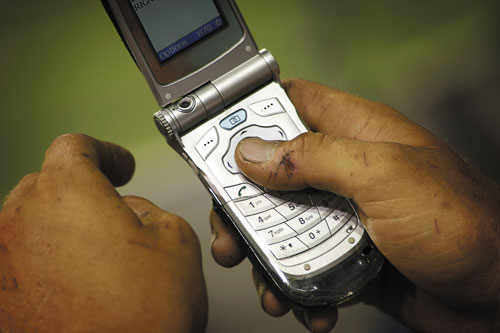
However, notwithstanding the sophistication of many of these systems, there is a critical disconnect: lack of real-time information from the field leads to significant problems. OMS provides system-generated updates based on historical (rather than actual) data; or it provides daily (or every other day) updates. This leads to stale information provided to customers via the IVR/ HVCA® solution, causing customers to prompt-out to a customer service representative whose information is no better. This cycle increases call volume from frustrated customers who repeatedly call back for information – and generally become more unhappy after each interaction with the utility.
This is an old problem, for which various solutions have been tried, from storm rooms to operations coordination centers, to closing hubs. At the end of the day, though, there is no substitute for real-time information from the field.
The Mobile Data Terminal, or MDT does allow for outage and other job tickets to be updated in real time from the field. Unfortunately it presents several challenges. Some training is required. Not all crews are equipped with them. And they do not solve the problem of communicating with mutual aid crews, outside contractors, tree crews, and other workers, especially during a major event.
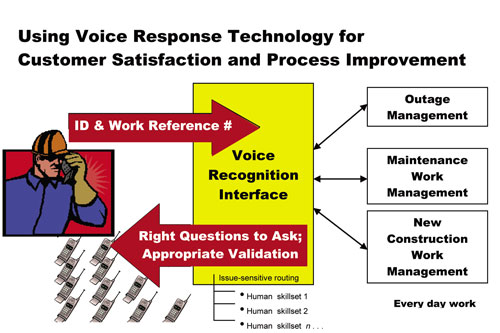
Dominion’s Experience
Dominion is one of the nation's largest producers of energy, manufacturing close to 6.3 trillion cubic feet of proved gas and oil reserves and approximately 28,100 MW of electric generation. It serves 4 million franchise gas and electric delivery customers in 5 states and 1.2 million unregulated retail energy customers in 9 states.
One of Dominion’s greatest challenges was retrieving critical information from the field in a timely manner in order to provide progress reports during a storm, update its customers, validate today’s jobs, and plan tomorrow’s work.
There were several issues that needed resolution. Work crews were having trouble getting through when calling in to complete work. There were both busy signals and office-staffing challenges. Often there were thousands of jobs to close, and these numbers increased by the hundreds during storms.
This contributed to untimely reporting. Throughout the day, even though work was completed, some work progression was going undocumented. This resulted in a lack of information available to the utility for planning, and poor information provided to customers. Frequently crews would delay reporting until the end of their shifts, causing a "big thud" at day's end.
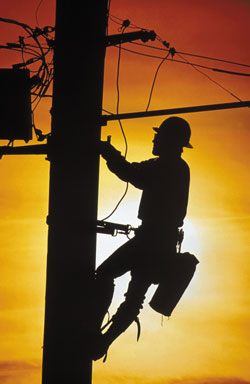
In addition, very poor or no job closing documentation after-the-fact became a significant handicap against long-term improvement.
To resolve these issues Dominion considered in-house systems with diverse and complicated job-closing requirements. Ultimately it was not reasonable to fund the specialized equipment necessary for everyone to interface with these systems, particularly off-system contractors and mutual aid crews.
Work crews responding to outages and downed lines needed to be able to call in without receiving a busy signal. Members of mutual aid crews, regardless of equipment type, needed to be able to connect with Dominion to report job status and receive assignments. And demands on call center staff need to be alleviated.
Immediate data collection and real time reporting were also necessities so the utility did not have to wait until an end of shift -- or even after an event -- to analyze performance and customer service.
For typical day-to-day work management, the utility also needed a simple, non-hardware solution to progress work from one status to the next; so that once a job was complete the next team could be dispatched to perform follow-up work.
The need was for Voice Recognition capability that could handle the call volumes that occur during storms, ask the questions and document the required responses, and relieve the pressure on the office staff by allowing routing to the right skill set for exceptions. Dominion needed technology that provided the above with just a standard phone.
The Solution
After evaluating its options, Dominion chose a Voice Recognition Mobile Workforce Management System called Field Connect, developed by Twenty First Century Communications and Waterfield Technologies. It is a fully hosted, automated job tracking system that uses the latest in advanced speech technology and direct real-time interface to allow field personnel to report job status quickly, easily and immediately, simply by speaking into their phones.
In order to use the system, field personnel simply call in and identify themselves. They speak which work order they want to close, and the system takes it from there. The system asks the questions to be answered for the type of work reported, prompting proper responses when appropriate and passively confirming responses as the conversation moves along.
Closing the Loop
Dominion’s system integrates with the utility’s existing architecture, allowing all field personnel (utility crews, mutual aid, and contractors) to update Outage Management, Work Management, and Customer Information Systems by using their voice and a phone.
Key for Dominion is the ability to use its mobile workforce management product over multiple systems within the company. Outage management and day-to-day work management exist on different platforms within the utility. The tool transparently communicates with multiple systems (Validation, Scheduled and Emergency work). Additionally, multiple jobs of multiple types can be reported within the same call.
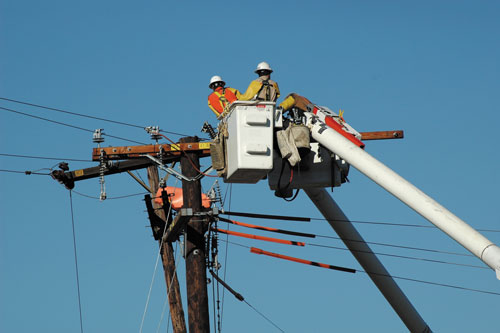
With a work management system in place, hundreds, even thousands of contractors can update an outage management system, one which has unique edits and requirements for job completion, using a tool as simple as a cell phone. Work progress and completion can be reported every day.
_____________________
A joint presentation on Outage Management from the Field was given by Tim Kesler (Technical Advisor, Dominion) and Michael Hearney (VP Sales and Business Development, Waterfield Technologies) at the Chartwell’s 9th Annual Energy Marketing & Customer Service Conference & Expo (EMACS) on October 4th. Kesler and Hearney shared key points from Dominion’s Voice-Recognition-in-the-Field Experience:
• Find a good partner.
• Talk early and often. Stay on the same page.
• Be prepared for shifts of business and process focus along the way. Stay flexible.
• Have an Acceptance Strategy. Know your culture.
• Allow for courteous responders (“yes, ma’am”).
• Incorporate local jargon/familiar terms as also-acceptable.
• Make voice recognition available to all crews; all approved contractors for every day work.
• Have the system recognize by work order # what type of work, what questions to answer and what choices to present.
• Use intelligent fail-out points to direct any issues to the persons best skilled to handle them.
Tim Kesler and Janet Mushrush, Director of Utility Sales, Twenty First Century Communications, will give a second presentation at the 6th Annual Outage Management Solutions Conference, “Capitalizing on Operational, Customer Focused and Cost Competitive Outage Management Solutions,” November 28-30, 2006 at the New Orleans Marriott at the Convention Center.
_________________________
The Results
The Voice Recognition Mobile Workforce Management System allows both Dominion’s teams and mutual aid crews to communicate via cell phone, so incompatible radio systems or mobile data terminals are no longer an issue. Advanced Speech Recognition eliminates the communication bottlenecks that occurred while field crews were waiting to reach a customer service representative. The system takes the burden off both dispatch and customer service staff.
Progress reporting through the day is a critical barometer during storms -- both for validating today's plan and for projections beyond today. Analysis without a thorough picture of events doesn’t tell the whole story. Field Connect’s real time interface provides immediate reporting and allows for improved in-day and post-storm analysis, actually filling in data gaps through automation. The result is work completions throughout the day with a reduced office staff, yet more complete outage reporting.

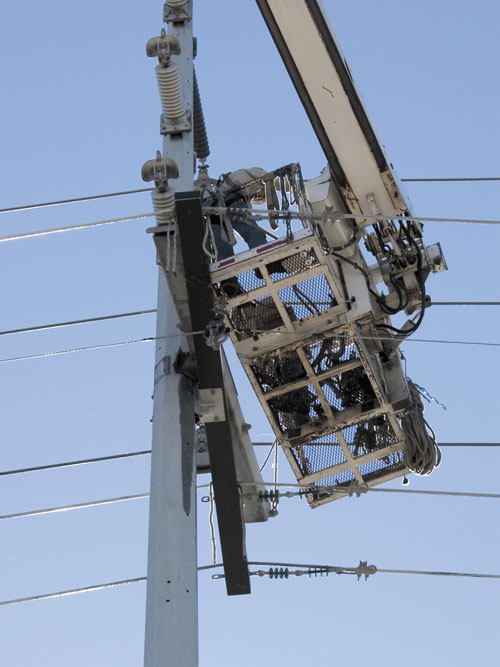
Utilities need the resources to continue to meet their customer commitments during a storm. Utilities can't just ‘wait and hope,’ -- they have to ‘know now and adjust.’ Real-time reporting through this tool provides a mechanism for that. "Our Voice Recognition Work Management System is another tool in our toolbox for providing customers with information that lets them plan their lives. We are positioned now to turn busy signals and field frustration into valuable information for ourselves and our customers."
-- Tim Kesler, Technical Advisor, Dominion
By using integrated tools that connect their key systems, utilities can position themselves to meet increasing customer service demands – providing best in class service every day, and most importantly, during major disasters.
About the Authors
Tim Kesler, Technical Advisor, Dominion
Tim Kesler has worked with Dominion for nineteen years in various Emergency Preparedness capacities at the local, regional, and system levels. Recent projects within Dominion include deployment of an electronic damage collection tool and assessment process and an on-going effort to transform Dominion from semi-mobile to a fully mobile, technologically integrated workforce. Tim has served as Dominion's Mutual Assistance liaison since the late '90s and is the current Chairperson for the Southeastern Electric Exchange (SEE) Mutual Assistance Committee.
www.dominion.com
Michael Hearney, VP Sales and Business Development, Waterfield Technologies
As VP, Sales and Business Development, Michael is responsible for all sales, marketing and partnership activities for Waterfield Technologies (WT). Michael brings considerable customer service and utilities experience to WT, having previously co-founded and managed a consulting company focused on advising utilities on call center and customer service operations. Michael has also led marketing and business development activities for leading call center, business process and voice technology companies such as Altitude Software, Categoric Software and MobileAria. Earlier in his career, Michael worked for Pacific Gas and Electric Company in a variety of customer service and operations management roles.
www.waterfieldtechnologies.com
Janet Mushrush, Director of Utility Sales, Twenty First Century Communications
Janet Mushrush has been with Twenty First Century Communications, Inc. (TFCC) for the past 9 years. Her early experience as a Project/Client Manager provided her with an in depth knowledge of the inner workings of both TFCC and client utilities and enabled her to transition easily to her current position of Director of Utility Sales. She is now responsible for generating new business in the electric utility markets in the US and Canada. She also functions as primary client liaison for over 80 of the company’s existing utility clients and works with them to identify new opportunities to expand TFCC’s offerings.
www.tfcci.com
In an environment of increasingly longer and more devastating storm seasons, customer service demands placed on utility companies have grown exponentially.
As a result of several major storms over the past ten years, especially the 2004 and 2005 hurricane seasons, utility end-users including many critical care customers have been without power for extended periods of time. In events such as these, communication and information from the utility are essential and expected aspects of customer service.
3.5 million people lost power in the 1998 ice storm that hit Southern Quebec and Maine.
The Northeast Blackout of 2003, the largest in North American history, affected an estimated 10 million people in Ontario and 40 million people in eight U.S. states. Ice storms in December 2004 knocked out power to approximately 350,000 people in Ohio and nearby areas, leaving 20,000 central Ohioans in the dark for eight days. During the 2004 hurricane season 8.5 million households lost electricity. The 2005 season brought record devastation. During the height of hurricane Dennis, 680,000 customers were without electricity in four southern states. Throughout the season, power outages struck nearly 98 percent of Southern Florida.
The Customer Experience
What the industry rates “top-drawer” or “excellent” customer care can still be miles behind a growing – sometimes exponentially growing – customer expectation. Consumers want certain assurances, not only that their utility is aware of their outage, but they also want to be informed of the cause. They need to know that someone is working on the problem, and they also expect information regarding repair progress and estimated restoration time.
Traditional Tools
The traditional set of tools to manage outages and communicate with customers include the Call Center which deflects calls away from the dispatchers; automation such as Interactive Voice Response (IVR) and High Volume Call Answering (HVCA®) which deflect calls away from call centers; and Outage Management Systems (OMS) to provide information to call centers and IVR/ HVCA® solutions to keep them from calling the dispatcher.

However, notwithstanding the sophistication of many of these systems, there is a critical disconnect: lack of real-time information from the field leads to significant problems. OMS provides system-generated updates based on historical (rather than actual) data; or it provides daily (or every other day) updates. This leads to stale information provided to customers via the IVR/ HVCA® solution, causing customers to prompt-out to a customer service representative whose information is no better. This cycle increases call volume from frustrated customers who repeatedly call back for information – and generally become more unhappy after each interaction with the utility.
This is an old problem, for which various solutions have been tried, from storm rooms to operations coordination centers, to closing hubs. At the end of the day, though, there is no substitute for real-time information from the field.
The Mobile Data Terminal, or MDT does allow for outage and other job tickets to be updated in real time from the field. Unfortunately it presents several challenges. Some training is required. Not all crews are equipped with them. And they do not solve the problem of communicating with mutual aid crews, outside contractors, tree crews, and other workers, especially during a major event.

Dominion’s Experience
Dominion is one of the nation's largest producers of energy, manufacturing close to 6.3 trillion cubic feet of proved gas and oil reserves and approximately 28,100 MW of electric generation. It serves 4 million franchise gas and electric delivery customers in 5 states and 1.2 million unregulated retail energy customers in 9 states.
One of Dominion’s greatest challenges was retrieving critical information from the field in a timely manner in order to provide progress reports during a storm, update its customers, validate today’s jobs, and plan tomorrow’s work.
There were several issues that needed resolution. Work crews were having trouble getting through when calling in to complete work. There were both busy signals and office-staffing challenges. Often there were thousands of jobs to close, and these numbers increased by the hundreds during storms.
This contributed to untimely reporting. Throughout the day, even though work was completed, some work progression was going undocumented. This resulted in a lack of information available to the utility for planning, and poor information provided to customers. Frequently crews would delay reporting until the end of their shifts, causing a "big thud" at day's end.

In addition, very poor or no job closing documentation after-the-fact became a significant handicap against long-term improvement.
To resolve these issues Dominion considered in-house systems with diverse and complicated job-closing requirements. Ultimately it was not reasonable to fund the specialized equipment necessary for everyone to interface with these systems, particularly off-system contractors and mutual aid crews.
Work crews responding to outages and downed lines needed to be able to call in without receiving a busy signal. Members of mutual aid crews, regardless of equipment type, needed to be able to connect with Dominion to report job status and receive assignments. And demands on call center staff need to be alleviated.
Immediate data collection and real time reporting were also necessities so the utility did not have to wait until an end of shift -- or even after an event -- to analyze performance and customer service.
For typical day-to-day work management, the utility also needed a simple, non-hardware solution to progress work from one status to the next; so that once a job was complete the next team could be dispatched to perform follow-up work.
The need was for Voice Recognition capability that could handle the call volumes that occur during storms, ask the questions and document the required responses, and relieve the pressure on the office staff by allowing routing to the right skill set for exceptions. Dominion needed technology that provided the above with just a standard phone.
The Solution
After evaluating its options, Dominion chose a Voice Recognition Mobile Workforce Management System called Field Connect, developed by Twenty First Century Communications and Waterfield Technologies. It is a fully hosted, automated job tracking system that uses the latest in advanced speech technology and direct real-time interface to allow field personnel to report job status quickly, easily and immediately, simply by speaking into their phones.
In order to use the system, field personnel simply call in and identify themselves. They speak which work order they want to close, and the system takes it from there. The system asks the questions to be answered for the type of work reported, prompting proper responses when appropriate and passively confirming responses as the conversation moves along.
Closing the Loop
Dominion’s system integrates with the utility’s existing architecture, allowing all field personnel (utility crews, mutual aid, and contractors) to update Outage Management, Work Management, and Customer Information Systems by using their voice and a phone.
Key for Dominion is the ability to use its mobile workforce management product over multiple systems within the company. Outage management and day-to-day work management exist on different platforms within the utility. The tool transparently communicates with multiple systems (Validation, Scheduled and Emergency work). Additionally, multiple jobs of multiple types can be reported within the same call.

With a work management system in place, hundreds, even thousands of contractors can update an outage management system, one which has unique edits and requirements for job completion, using a tool as simple as a cell phone. Work progress and completion can be reported every day.
_____________________
A joint presentation on Outage Management from the Field was given by Tim Kesler (Technical Advisor, Dominion) and Michael Hearney (VP Sales and Business Development, Waterfield Technologies) at the Chartwell’s 9th Annual Energy Marketing & Customer Service Conference & Expo (EMACS) on October 4th. Kesler and Hearney shared key points from Dominion’s Voice-Recognition-in-the-Field Experience:
• Find a good partner.
• Talk early and often. Stay on the same page.
• Be prepared for shifts of business and process focus along the way. Stay flexible.
• Have an Acceptance Strategy. Know your culture.
• Allow for courteous responders (“yes, ma’am”).
• Incorporate local jargon/familiar terms as also-acceptable.
• Make voice recognition available to all crews; all approved contractors for every day work.
• Have the system recognize by work order # what type of work, what questions to answer and what choices to present.
• Use intelligent fail-out points to direct any issues to the persons best skilled to handle them.
Tim Kesler and Janet Mushrush, Director of Utility Sales, Twenty First Century Communications, will give a second presentation at the 6th Annual Outage Management Solutions Conference, “Capitalizing on Operational, Customer Focused and Cost Competitive Outage Management Solutions,” November 28-30, 2006 at the New Orleans Marriott at the Convention Center.
_________________________
The Results
The Voice Recognition Mobile Workforce Management System allows both Dominion’s teams and mutual aid crews to communicate via cell phone, so incompatible radio systems or mobile data terminals are no longer an issue. Advanced Speech Recognition eliminates the communication bottlenecks that occurred while field crews were waiting to reach a customer service representative. The system takes the burden off both dispatch and customer service staff.
Progress reporting through the day is a critical barometer during storms -- both for validating today's plan and for projections beyond today. Analysis without a thorough picture of events doesn’t tell the whole story. Field Connect’s real time interface provides immediate reporting and allows for improved in-day and post-storm analysis, actually filling in data gaps through automation. The result is work completions throughout the day with a reduced office staff, yet more complete outage reporting.


Utilities need the resources to continue to meet their customer commitments during a storm. Utilities can't just ‘wait and hope,’ -- they have to ‘know now and adjust.’ Real-time reporting through this tool provides a mechanism for that. "Our Voice Recognition Work Management System is another tool in our toolbox for providing customers with information that lets them plan their lives. We are positioned now to turn busy signals and field frustration into valuable information for ourselves and our customers."
-- Tim Kesler, Technical Advisor, Dominion
By using integrated tools that connect their key systems, utilities can position themselves to meet increasing customer service demands – providing best in class service every day, and most importantly, during major disasters.
About the Authors
Tim Kesler, Technical Advisor, Dominion
Tim Kesler has worked with Dominion for nineteen years in various Emergency Preparedness capacities at the local, regional, and system levels. Recent projects within Dominion include deployment of an electronic damage collection tool and assessment process and an on-going effort to transform Dominion from semi-mobile to a fully mobile, technologically integrated workforce. Tim has served as Dominion's Mutual Assistance liaison since the late '90s and is the current Chairperson for the Southeastern Electric Exchange (SEE) Mutual Assistance Committee.
www.dominion.com
Michael Hearney, VP Sales and Business Development, Waterfield Technologies
As VP, Sales and Business Development, Michael is responsible for all sales, marketing and partnership activities for Waterfield Technologies (WT). Michael brings considerable customer service and utilities experience to WT, having previously co-founded and managed a consulting company focused on advising utilities on call center and customer service operations. Michael has also led marketing and business development activities for leading call center, business process and voice technology companies such as Altitude Software, Categoric Software and MobileAria. Earlier in his career, Michael worked for Pacific Gas and Electric Company in a variety of customer service and operations management roles.
www.waterfieldtechnologies.com
Janet Mushrush, Director of Utility Sales, Twenty First Century Communications
Janet Mushrush has been with Twenty First Century Communications, Inc. (TFCC) for the past 9 years. Her early experience as a Project/Client Manager provided her with an in depth knowledge of the inner workings of both TFCC and client utilities and enabled her to transition easily to her current position of Director of Utility Sales. She is now responsible for generating new business in the electric utility markets in the US and Canada. She also functions as primary client liaison for over 80 of the company’s existing utility clients and works with them to identify new opportunities to expand TFCC’s offerings.
www.tfcci.com







